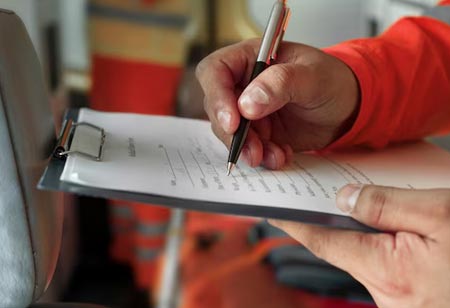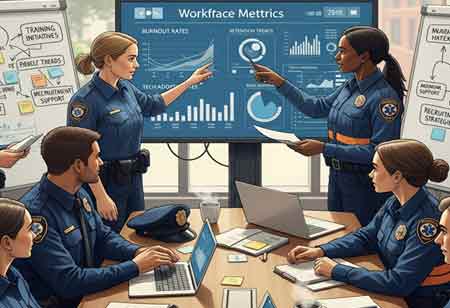THANK YOU FOR SUBSCRIBING
Be first to read the latest tech news, Industry Leader's Insights, and CIO interviews of medium and large enterprises exclusively from Gov CIO Outlook
THANK YOU FOR SUBSCRIBING

By
Government CIO Outlook | Tuesday, June 08, 2021
Stay ahead of the industry with exclusive feature stories on the top companies, expert insights and the latest news delivered straight to your inbox. Subscribe today.
Text-to-911 technologies are currently being developed; however, the ability to accept multimedia in the form of pictures or video—in real-time or after the fact — is also being developed.
FREMONT, CA: The environment for public safety technology is shifting on a daily basis, both in terms of significant regulatory changes and technological advancements that affect public safety, as well as new product announcements. Here are two recent and evolving technological advancements that will affect public safety shortly, as well as public safety and technology experts' predictions for what will happen in the long run.
Mission-Critical Push-To-Talk (MCPTT): The long-awaited rollout of 3GPP's standards-based MCPTT has finally arrived. When MCPTT is used on a network that provides priority and preemption for established public safety users, the packets are given the highest priority possible to achieve low latency.
NextGeneration 911 Systems: For years, Public-Safety Answering Point (PSAPs) have been working to modernize 911 systems so that they can accommodate new forms of incoming information from callers in need of assistance and people witnessing disturbances. The first areas of focus (such as VoIP (Voice over Internet protocol)) were new types of incoming voice calls. Still, the focus has since changed to concentrating on device interoperability, with additional features starting to be deployed as well. Text-to-911 technologies are currently being developed; however, the ability to accept multimedia in the form of pictures or video—in real-time or after the fact — is also being developed. However, there are a few tricks to texting 911. People must text their messages in their entirety, without using emojis or slang abbreviations that dispatchers might misinterpret. The FCC (Federal Communications Commission) maintains a list of PSAPs that have Text-to-911 capabilities, and each month it updates that list.
Apart from those new technologies, there are other developments projected to have a significant impact on potential public safety responses:
Virtual/augmented reality: Firefighters and law enforcement officers, including drone operators, are already being trained using AR/VR. Remote or socially distributed training options are becoming increasingly relevant in pandemic situations. For public safety drone pilots, such training is also essential to keep their skills sharp and their fingers nimble. Tow companies jointly have developed the C-Thru, a heads-up monocle display that fits within a firefighter's face mask and allows them to see through smoke while also overlaying temperature information. Firefighters can use that data to make more educated and safer decisions in dangerous situations. It can also be used to identify people inside a room, even if visibility is restricted.
I agree We use cookies on this website to enhance your user experience. By clicking any link on this page you are giving your consent for us to set cookies. More info

However, if you would like to share the information in this article, you may use the link below:
www.govciooutlookapac.com/news/developing-public-safety-technologies-nid-1333.html



